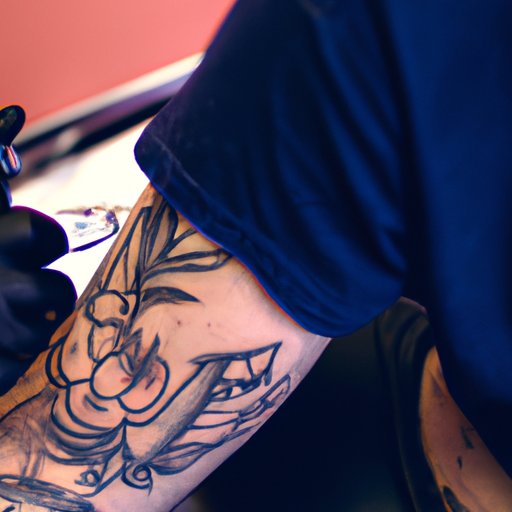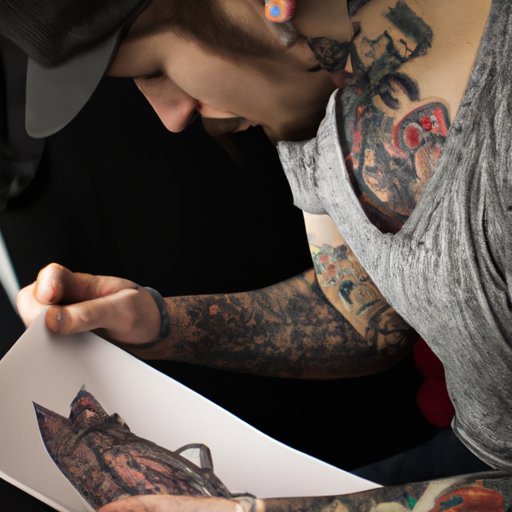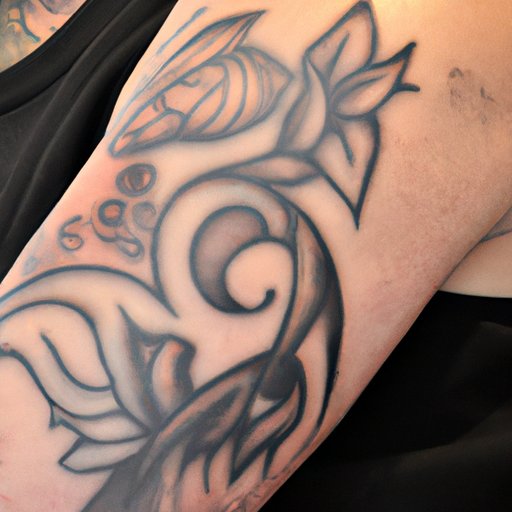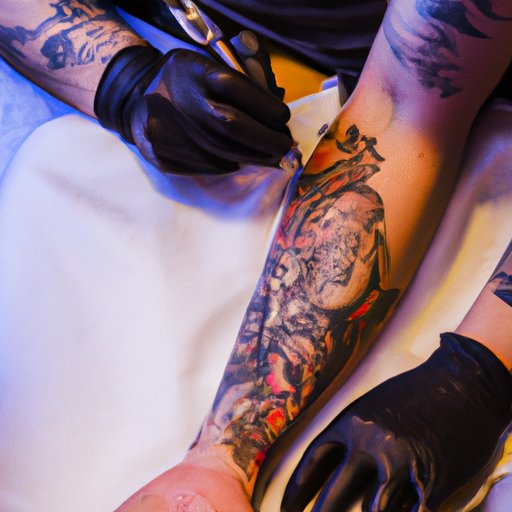
Overview of the Tattooing Process
Tattooing is a form of body modification that has been around for centuries, with evidence of its existence stretching back as far as the Neolithic period. It involves using needles to inject ink into the skin to create a permanent design or mark on the body. This type of art has grown in popularity over the years and has become an important part of many cultures around the world.
What is a Tattoo?
A tattoo is a form of body modification in which ink is injected into the dermis layer of the skin. The ink is usually applied by a professional artist who uses a variety of tools such as needles, electric machines, and special inks to create the desired design. The ink is designed to stay in the skin permanently, although some types of tattoos can be removed with laser treatments or other methods.
History of Tattooing
Tattoos have been around since ancient times, with evidence of their use dating back to the Neolithic period. They were used for a variety of purposes, from religious rituals to symbols of status or rank. Over time, tattoos became more widely accepted and began to take on a variety of forms, from intricate tribal designs to simple words or symbols. Today, tattoos are still used for a variety of reasons, from commemorating special occasions to expressing personal beliefs.
How Does the Tattooing Process Work?
The tattooing process involves injecting ink into the dermis layer of the skin. To do this, a professional artist will use a needle and a machine to create the desired design. The needle is inserted into the skin and the ink is injected at a certain depth and pressure. The needle is then moved along the skin in a specific pattern to create the desired effect. The entire process can take anywhere from several minutes to several hours, depending on the size and complexity of the design.
Types of Tattooing Equipment and Techniques
Tattooing requires specialized equipment and techniques in order to create the desired effect. Different types of needles are used for different types of tattoos, from small needles for fine lines to larger needles for shading and color. In addition, different colors and pigments are used to create the desired look. Different techniques can also be used to create different effects, such as shading, stippling, and outlining.
Exploring the Health and Safety Guidelines for Tattooing
Getting a tattoo is a serious decision and should not be taken lightly. It is important to make sure that the tattoo parlor is hygienic and safe, and follows all local and national health guidelines. It is also important to be aware of the risks associated with tattooing, such as infections, allergic reactions, and scarring. Following these guidelines can help ensure that the tattooing experience is safe and successful.

Examining the Different Styles and Designs of Tattoo Art
There are many different styles and designs of tattoo art. Popular styles include traditional, neo-traditional, blackwork, watercolor, and geometric. When selecting a design, it is important to find one that is meaningful and reflects your personal style. Working with an experienced artist can help you create a unique design that is perfect for you.

Exploring the Different Reasons People Get Tattoos
People get tattoos for a variety of reasons. Some people get tattoos to commemorate special occasions or to express their personal beliefs. Others get tattoos to mark major life events or to show their love for someone. Whatever the reason, tattoos can be powerful reminders of what is important to us.
Investigating the Aftercare Procedures for Tattoo Healing
After getting a tattoo, it is important to properly care for it in order to prevent infections and other complications. This includes cleaning the area regularly and keeping it moisturized. Avoiding direct sunlight and swimming pools is also important. If there is any redness, swelling, or pain, it is important to see a doctor right away.

Exploring the Cultural Aspects of Tattooing
Tattooing has long been a part of many cultures around the world. In ancient cultures, tattoos were often used to mark important life events or to signify membership in a tribe. Over time, attitudes towards tattooing have changed and it has become more widely accepted. Today, tattoos are seen as a form of self-expression and a way to honor our heritage or to make a statement.
(Note: Is this article not meeting your expectations? Do you have knowledge or insights to share? Unlock new opportunities and expand your reach by joining our authors team. Click Registration to join us and share your expertise with our readers.)
